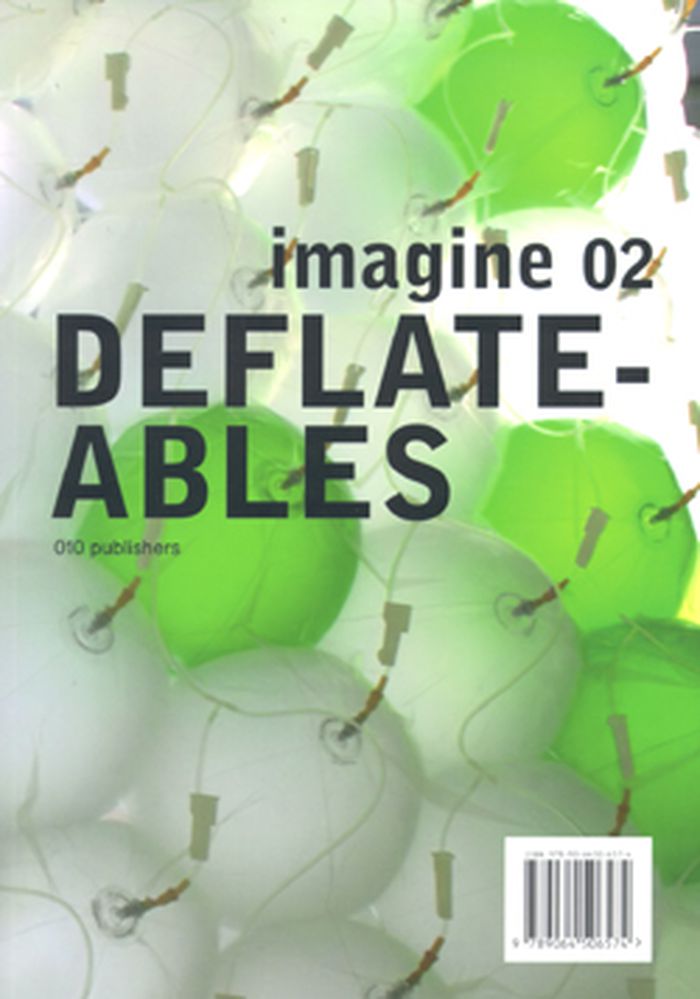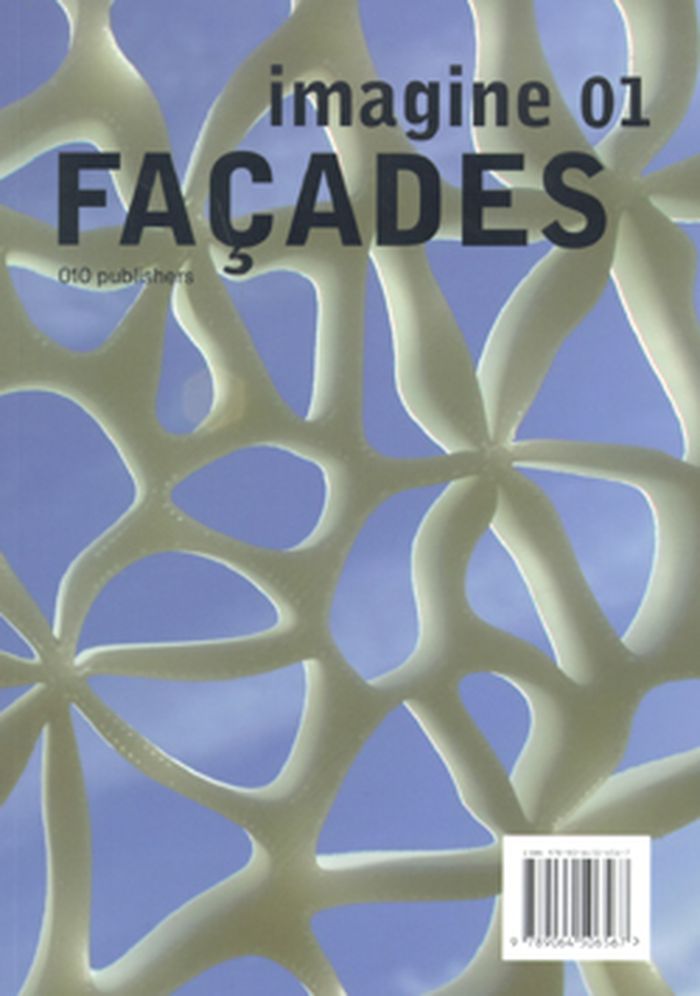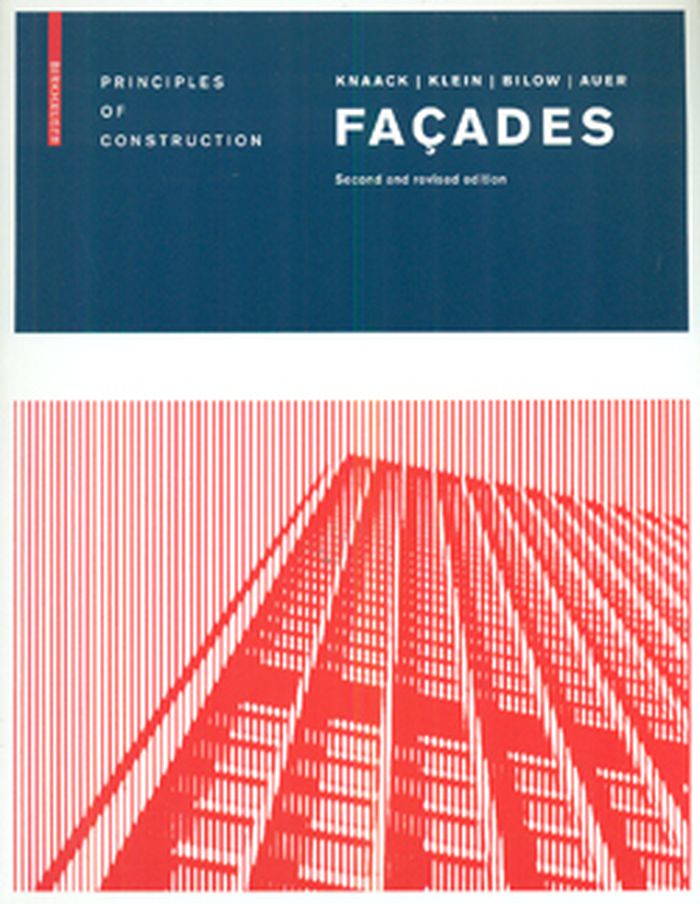Imagine 02 Deflateables
$43.50
(disponible sur commande)
Résumé:
Pneumatic structures have been thoroughly investigated and developed during the 1960s. However, the energy crisis and aesthetic developments stopped the process of employing these structures as a mainstream construction method. Deflateables concentrates on the very limited knowledge of vacuum constructions and develops a range of aesthetic, technical and functional design(...)
Structures d’ingénierie
octobre 2007, Rotterdam
Imagine 02 Deflateables
Actions:
Prix:
$43.50
(disponible sur commande)
Résumé:
Pneumatic structures have been thoroughly investigated and developed during the 1960s. However, the energy crisis and aesthetic developments stopped the process of employing these structures as a mainstream construction method. Deflateables concentrates on the very limited knowledge of vacuum constructions and develops a range of aesthetic, technical and functional design possibilities. Until today, there has been a very limited number of designs developed and realized using pressurized constructions – despite the fact that this technology could lead to positive aspects: the air pressure of the earth can be used as a stabilizing and form-giving parameter, creating a specific and inspiring shape. In addition, the very nature of this technology offers varying degrees of thermal and acoustic insulation. Exploiting the possibilities of extremely light and, at the same time, energetically active constructions, deflateables are one of the promising fields of architectural and design developments. The chance to create structures that can move and react to requests such as user and climate requirements as well as formative demands, lifts this topic onto the level of a realistic and usable technology for as yet unknown design possibilities. Two volumes of the Imagine series are planned annually. Façades and Deflateables will appear in May 2008. Performance Driven Envelopes and Rapids will appear at the beginning of 2009.
Structures d’ingénierie
Imagine 01 Façades
$43.50
(disponible sur commande)
Résumé:
This handy how-to volume comprises various topics of strategic, material and technological developments. Aspects such as function integration, networking of elements, new structures and materials and lastly the addition of functions to existing structures are investigated and explained in 100 or so concrete ideas. Two volumes of the Imagine series are planned(...)
Structures d’ingénierie
octobre 2007, Rotterdam
Imagine 01 Façades
Actions:
Prix:
$43.50
(disponible sur commande)
Résumé:
This handy how-to volume comprises various topics of strategic, material and technological developments. Aspects such as function integration, networking of elements, new structures and materials and lastly the addition of functions to existing structures are investigated and explained in 100 or so concrete ideas. Two volumes of the Imagine series are planned annually. Façades and Deflateables just appeared. Performance Driven Envelopes and Rapids will appear at the beginning of 2009.
Structures d’ingénierie
$54.95
(disponible sur commande)
Résumé:
Façades determine the appearance of a building. Hence, they constitute a major element in architecture. At the same time, the building’s envelope has important functions to fulfil, such as lighting, weatherproofing, thermal insulation, load transfer and sound insulation. Over the past 15 years, façades have become increasingly complex – ‘intelligent’ facades, for(...)
Façades : principles of construction, second and revised edition
Actions:
Prix:
$54.95
(disponible sur commande)
Résumé:
Façades determine the appearance of a building. Hence, they constitute a major element in architecture. At the same time, the building’s envelope has important functions to fulfil, such as lighting, weatherproofing, thermal insulation, load transfer and sound insulation. Over the past 15 years, façades have become increasingly complex – ‘intelligent’ facades, for instance, adapt to changing climate and lighting conditions. Newly developed materials and technologies have broadened the scope of façade functions. This book demonstrates the principles of façade construction. It systematically describes the most common types, such as post-and-beam façade, curtain wall, corridor façade or double façade, and provides guidelines for appropriate detailing. Numerous drawings made especially for the book explain the principles of different types of facades, which are then illustrated with built examples. For this second edition, all chapters were revised and all four examples in the case studies chapter were replaced by new material. The new chapter “Future Façades” offers insights into what’s next.
Structures d’ingénierie


